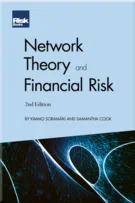The Regulation of Systemic Risk
The Regulation of Systemic Risk
Preface
Why Systemic Risk Oversight Matters
The Bottom-up Approach to Systemic Risk
Fundamental Information and Firm-level Risk
Extracting Risk Measures from Credit Derivatives and Bonds
Equity-implied Methods and Risk-neutrality Transformations
Systemic Risk Measurement: Statistical Methods
CoRisk: Quantile Regressions in Practice
Balance-sheet Network Analysis
The Portfolio-based Approach to Systemic Risk
Advances in Modelling Systemic Risk in Financial Networks
Agent-based Models of the Financial System
The Regulation of Systemic Risk
The Effectiveness of Macroprudential Policy
Epilogue
References
Abbreviations
Test chapter
Before the global financial crisis of 2008 it was seldom considered that the main mandate of financial regulation was to prevent systemic risk and mitigate its effects. Traditionally, financial regulation has aimed at two objectives: to ensure the solvency of financial institutions on a stand-alone basis; and to reassure their clients and consumers that the institutions followed appropriate market practices, including complying with high standards of transparency and disclosure.
Praiseworthy and relevant as these two objectives are, which have increasingly come under the purview of microprudential policy, they are insufficient for protecting the financial system from a generalised breakdown with severe consequences for the real economy. The failure of microprudential policy to prevent financial crises was due to its focus on financial institutions in a vacuum, isolated from the rest of the financial system and the real economy. Therefore, by design, the traditional regulatory framework could not capture the linkages across institutions, the role institutions play in the dynamics of the credit cycle, and the feedback between the credit cycle and the business cycle.
Moreover
Copyright Infopro Digital Limited. All rights reserved.
As outlined in our terms and conditions, https://www.infopro-digital.com/terms-and-conditions/subscriptions/ (point 2.4), printing is limited to a single copy.
If you would like to purchase additional rights please email info@risk.net
Copyright Infopro Digital Limited. All rights reserved.
You may share this content using our article tools. As outlined in our terms and conditions, https://www.infopro-digital.com/terms-and-conditions/subscriptions/ (clause 2.4), an Authorised User may only make one copy of the materials for their own personal use. You must also comply with the restrictions in clause 2.5.
If you would like to purchase additional rights please email info@risk.net








